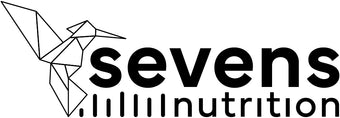Microalgae cultivation is gaining popularity due to its high nutritional content and ability to promote a healthy diet. Furthermore, these microalgae are used in multiple industries, including food, animal feed, pharmaceuticals, cosmetics, bioplastics, and biofuels. One of the most prominent in this field is Haematococcus pluvialis , known as the richest source of natural astaxanthin and the basis for Astaxanthin Sevens .
The cultivation of H. pluvialis involves two main stages:
- Green stage: During this phase, microalgae focus on cell division under optimal conditions of temperature (25–30 °C), adequate pH, and nutrient availability. Ideal light intensity is less than 150 µmoL photons m−2 s−1. Commonly used culture media include KM1, BBM, Z8, BG-11, and OHM.
- Red stage: This is where astaxanthin accumulates, a process triggered by stress factors such as nitrogen deficiency, high light intensity, high temperatures, or the presence of metals.
Microalgae Cultivation Methods
The cultivation method varies depending on the objectives and available resources:
-
Photoautotrophic:
Microalgae use light as an energy source and inorganic compounds as a carbon source. -
Photoheterotrophic:
They use organic carbon and optionally light as an energy source. -
Heterotrophic:
They use organic sources for both energy and carbon. -
Mixotrophic:
They combine organic and inorganic carbon and energy sources.
Industrial Scale Cultivation
Although laboratory-level culture models exist for H. pluvialis , industrial-scale production presents significant challenges, such as microbial contamination and high costs of astaxanthin extraction compared to its chemical synthesis.
Sustainable Farming Practices
To overcome these challenges, sustainable and cost-effective methods are being developed, including:
- Wastewater use: Growing H. pluvialis in treated wastewater not only reduces costs but also remediates the water by removing nitrates, phosphates, and other contaminants. For example, cultivation in pretreated swine or potato wastewater has shown a significant increase in astaxanthin accumulation.
- Photosynthetic Microbial Fuel Cells: This method uses H. pluvialis as a cathode to generate bioelectricity, oxygen, and biomass while remediating wastewater.
- Bubble culture: Recycled plastic wrap is used to create a controlled environment, minimizing water loss and the risk of contamination.
Advantages of Microalgae Cultivation
-
Sustainability:
Microalgae have a higher carbon sequestration rate, lower water consumption, and eliminate the need for pesticides, making them more environmentally friendly than traditional agricultural practices. -
Total utilization:
All microalgae biomass is usable, which reduces waste production. -
Closed photobioreactors:
These systems reduce the risk of infection, minimize contamination, and enable scalable production in small spaces.
Challenges and Future Perspectives
Despite its advantages, microalgae cultivation faces challenges:
-
Pollution in open ponds:
It is susceptible to invasions by faster-growing microalgae. -
Environmental factors:
Outdoor systems are dependent on weather conditions, which limits the areas suitable for stable production. -
Technical maintenance:
Closed systems require expertise to maintain gas exchange, cleanliness, and culture stability.
As research advances and cultivation techniques are optimized, the potential of microalgae continues to grow. The sustainable production of Haematococcus pluvialis and its natural astaxanthin is a clear example of how biotechnology can contribute to a healthier and more sustainable future.
Microalgae cultivation not only offers nutritional and economic benefits but also represents an innovative solution to address environmental problems. With continued research and development efforts, Haematococcus pluvialis and other microalgae could play a key role in the transformation toward a more sustainable and healthy world. At Sevens, we are committed to maximizing the potential of these technologies to offer you products that care for you and the planet.



